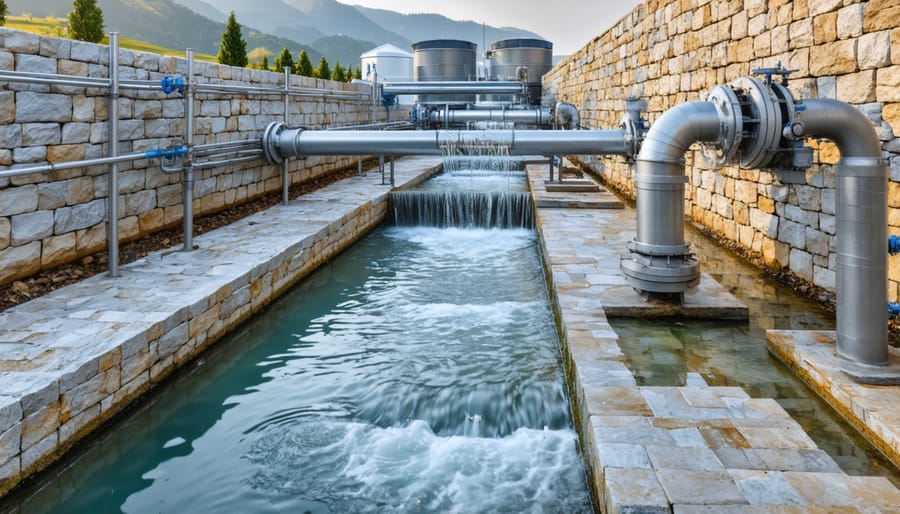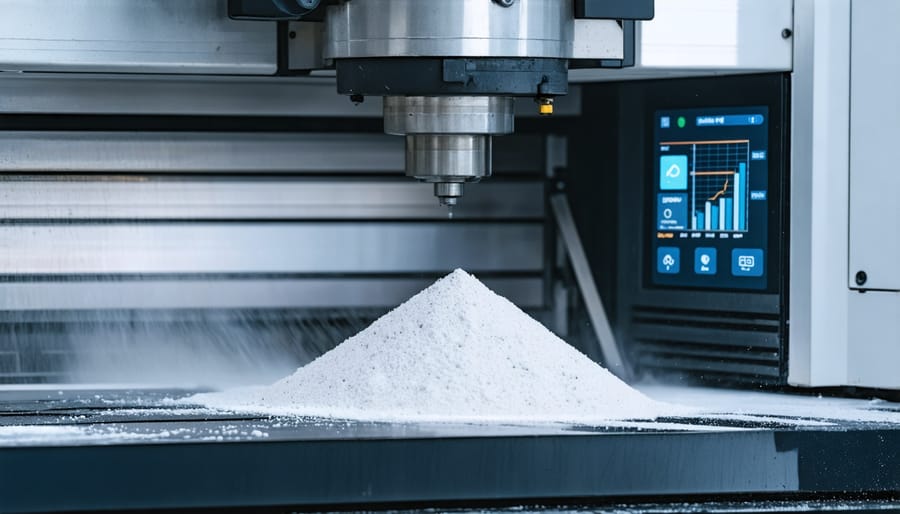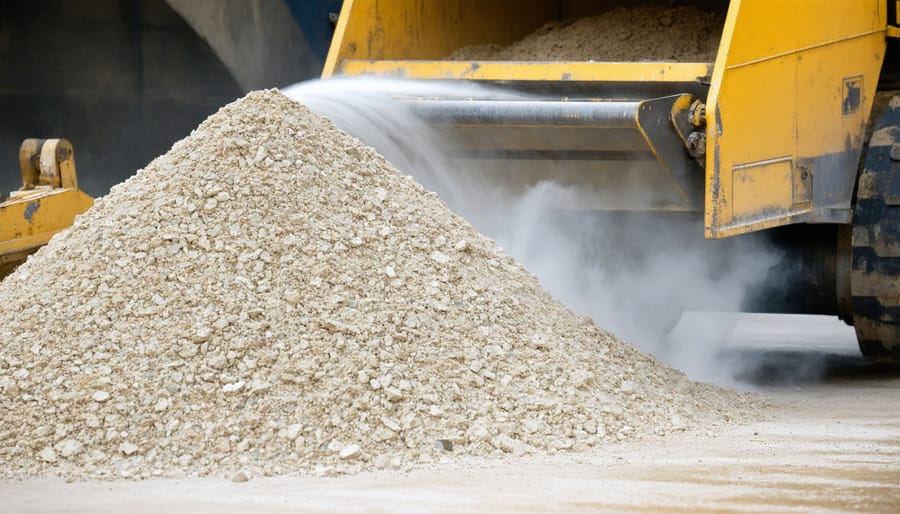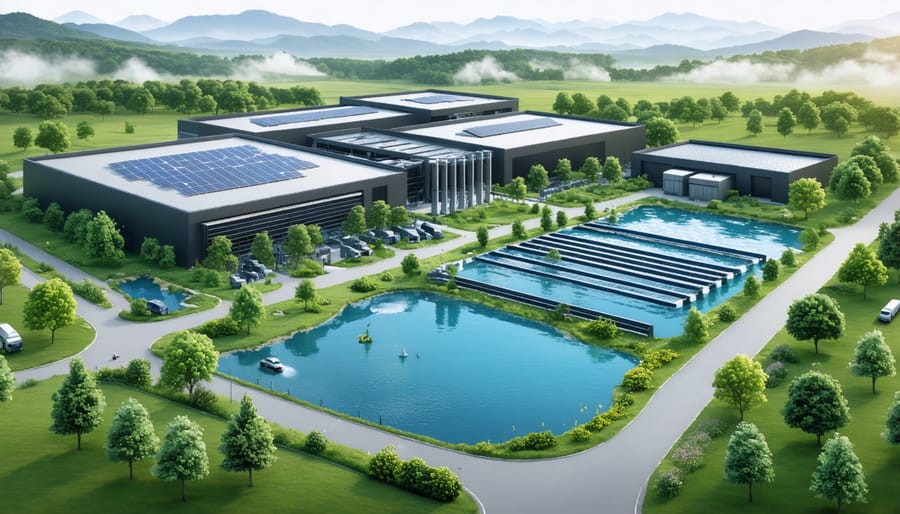Modern manufacturing stands at a crucial crossroads where environmental responsibility meets industrial innovation. Forward-thinking companies are revolutionizing production processes through environmentally sustainable stone practices and cutting-edge technology, dramatically reducing their ecological footprint while maintaining product excellence.
By implementing closed-loop water systems, utilizing renewable energy sources, and optimizing waste recovery processes, manufacturers are achieving remarkable sustainability benchmarks. These advancements aren’t just environmentally conscious—they’re economically sound, offering significant cost savings through reduced resource consumption and improved operational efficiency.
The transformation toward greener manufacturing represents more than a trend; it’s become a competitive necessity. Companies leading this charge are discovering that sustainable practices drive innovation, enhance brand value, and meet growing consumer demand for environmentally responsible products. From zero-waste initiatives to carbon-neutral production lines, these pioneering approaches are setting new industry standards and proving that profitability and environmental stewardship can work in perfect harmony.
This shift toward sustainable manufacturing isn’t just reshaping individual companies—it’s revolutionizing entire industries and supply chains, creating a blueprint for the future of global production.
Water Conservation and Recycling Systems
Closed-Loop Water Systems
Closed-loop water systems represent a significant advancement in sustainable manufacturing, particularly in the stone industry where water usage is traditionally high. These systems capture, filter, and recycle process water, dramatically reducing both water consumption and wastewater discharge.
In a typical closed-loop system, water used for cutting and polishing stone is collected in settlement tanks where suspended particles naturally settle to the bottom. The water then passes through a series of filters that remove remaining particulates and contaminants. Advanced filtration systems, including multimedia filters and reverse osmosis units, ensure the recycled water meets quality standards for reuse in production.
This recycling process can reduce fresh water consumption by up to 95%, with some facilities achieving near-zero water discharge. The settled stone particles are also recovered and repurposed for other applications, such as aggregate material or soil amendments, further minimizing waste.
Modern closed-loop systems incorporate smart monitoring technology that continuously analyzes water quality and system performance. These sensors help maintain optimal operating conditions and alert operators to potential issues before they impact production. The initial investment in closed-loop technology typically pays for itself through reduced water costs and compliance with environmental regulations.
Case studies show that stone fabrication facilities implementing closed-loop systems often see significant improvements in their environmental performance while maintaining high product quality standards.

Water Filtration Technologies
Modern stone processing facilities employ sophisticated water filtration systems that dramatically reduce environmental impact while maximizing water efficiency. These systems typically consist of multiple stages, beginning with primary settling tanks where larger particles naturally separate from the water. The water then flows through advanced microfiltration units that remove fine particles down to microscopic levels.
A key component in contemporary filtration technology is the closed-loop water recycling system, which can reclaim up to 98% of process water. This system uses a combination of mechanical and chemical treatments to purify water for reuse, significantly reducing fresh water consumption. Suspended solids are removed through a series of filters, while specialized flocculants help aggregate smaller particles for easier removal.
Many facilities now incorporate innovative sludge dewatering systems that compress waste material into dense cakes, making disposal more efficient and environmentally friendly. The extracted water is returned to the processing cycle, while the compressed material can often be repurposed for other industrial applications.
Recent advancements include smart monitoring systems that continuously analyze water quality and automatically adjust filtration parameters for optimal performance. These systems can detect variations in particle content and adjust flow rates accordingly, ensuring consistent water quality while minimizing energy consumption and maintenance requirements.
The implementation of these advanced filtration technologies not only supports environmental sustainability but also provides significant cost savings through reduced water consumption and waste disposal expenses.
Energy-Efficient Equipment and Processes
Smart Cutting Technologies
Modern cutting technologies have revolutionized stone fabrication processes, offering significant environmental benefits while maintaining exceptional precision. Computer Numerical Control (CNC) machines and water jet cutters now incorporate smart features that optimize energy usage through automated power management systems. These systems automatically switch to low-power modes during idle periods and adjust power consumption based on cutting requirements.
Advanced blade technology, featuring diamond-tipped segments with improved wear resistance, reduces the frequency of replacements and minimizes waste generation. Smart sensors continuously monitor blade condition and cutting parameters, automatically adjusting feed rates and cutting speeds to maintain optimal efficiency while reducing energy consumption.
Variable frequency drives (VFDs) in cutting equipment allow for precise control of motor speeds, resulting in up to 30% energy savings compared to conventional systems. These drives optimize power usage based on the specific material being cut and the desired finish quality.
Modern machines also incorporate dust collection systems with energy-efficient filtration technology, maintaining clean air while using less power. Some systems feature regenerative air cleaning mechanisms that reduce the need for compressed air, further decreasing energy consumption.
The integration of artificial intelligence and machine learning enables predictive maintenance schedules, preventing energy waste from inefficient operation while extending equipment life spans. This smart approach to cutting technology not only reduces environmental impact but also improves production efficiency and product quality.

LED Lighting and Solar Integration
The integration of LED lighting and solar power systems represents a significant advancement in sustainable manufacturing practices. Modern stone processing facilities are increasingly adopting LED lighting solutions, which consume up to 75% less energy than traditional lighting systems while providing superior illumination for precise cutting and finishing work.
Solar panel installations on facility rooftops and adjacent areas are becoming standard practice, with many manufacturers achieving 30-40% of their total energy needs through solar power generation. These systems often include smart monitoring technology that optimizes energy distribution based on peak production hours and facility demands.
Advanced daylight harvesting systems complement these technologies by automatically adjusting artificial lighting levels based on available natural light. This smart integration can reduce lighting-related energy consumption by an additional 20-30% during daylight hours.
Case studies demonstrate the effectiveness of these combined approaches. For example, a leading stone manufacturer in Vermont reduced their annual energy costs by $75,000 after implementing a comprehensive LED and solar system, with a return on investment period of just four years.
Manufacturers are also exploring innovative solutions like solar-powered water heating systems for stone cutting processes and energy storage solutions that enable operations to continue during non-peak solar hours. These integrated systems not only reduce operational costs but also significantly decrease the facility’s carbon footprint.
Waste Reduction and Material Recovery
Stone Dust Recycling
Stone dust recycling represents a significant advancement in sustainable manufacturing practices within the natural stone industry. This fine particulate matter, generated during cutting and finishing processes, can be collected through specialized dust collection systems and repurposed for various applications, dramatically reducing waste and environmental impact.
Modern stone fabrication facilities employ cyclone collectors and bag house systems to capture stone dust efficiently. These systems use powerful vacuum technology to prevent particles from becoming airborne while directing them into collection containers. The collected material undergoes screening and sorting processes to ensure consistent particle size and quality for reuse.
The recycled stone dust finds numerous practical applications across different industries. In construction, it serves as a valuable additive in concrete mixtures, improving workability and strength. Landscaping professionals use it as a base material for pavers and in soil stabilization projects. Agricultural applications include pH adjustment for soil and as a mineral supplement for livestock feed.
Manufacturing facilities can also incorporate stone dust into new product development. When mixed with binding agents, it can be formed into artificial stone products, decorative panels, and other building materials. This circular approach not only reduces waste but also creates additional revenue streams for manufacturers.
Environmental benefits extend beyond waste reduction. Proper dust collection improves air quality in manufacturing facilities, protects worker health, and prevents environmental contamination. Companies implementing comprehensive stone dust recycling programs often report significant cost savings in waste disposal and raw material procurement, while meeting increasingly stringent environmental regulations.

Scrap Material Innovation
In the evolving landscape of sustainable stone manufacturing, innovative approaches to scrap material management are revolutionizing the industry. Leading manufacturers now implement creative solutions that transform what was once considered waste into valuable products, significantly reducing environmental impact while maximizing resource utilization.
Stone remnants are being repurposed into a variety of applications, including mosaic tiles, landscaping materials, and decorative aggregates. Smaller pieces find new life in terrazzo flooring, while stone dust is incorporated into concrete mixtures, enhancing strength and reducing the need for virgin materials. Some manufacturers have developed proprietary processes to compress stone waste into new composite materials, suitable for countertops and architectural elements.
Companies are also implementing advanced cutting technologies that optimize slab usage and minimize waste generation. Computer-aided design (CAD) systems calculate the most efficient cutting patterns, reducing offcuts by up to 30% compared to traditional methods. These remnants are then categorized by size and quality, creating an inventory system that facilitates easy access for smaller projects.
Waste reduction strategies extend beyond material reuse. Stone processing facilities are installing closed-loop water filtration systems that separate and collect stone particles, which can be used in soil conditioning or road base materials. Some manufacturers partner with local construction companies and landscapers to ensure even the smallest pieces find appropriate applications, creating a circular economy within the industry.
These innovative approaches not only reduce landfill waste but also create new revenue streams and contribute to LEED certification points for construction projects, making stone an increasingly sustainable building material choice.
Certification and Industry Standards
In today’s environmentally conscious marketplace, manufacturers must adhere to stringent certification requirements and quality control standards to ensure their processes meet sustainable manufacturing criteria. Several key certifications have emerged as industry benchmarks for environmental responsibility.
ISO 14001 certification serves as the global standard for environmental management systems, requiring manufacturers to implement comprehensive environmental policies and continuously improve their performance. This certification ensures companies maintain detailed documentation of their environmental impact and take measurable steps toward reduction.
LEED (Leadership in Energy and Environmental Design) certification has become increasingly important for stone manufacturers, as their products often contribute to green building projects. Manufacturers must demonstrate sustainable practices in resource extraction, processing, and waste management to qualify for LEED credits.
The Natural Stone Council’s NSC 373 Sustainable Production Certification specifically addresses stone industry practices. This certification evaluates water consumption, chemical management, site maintenance, and corporate governance to ensure comprehensive environmental stewardship.
Environmental Product Declarations (EPDs) provide transparent, third-party verified information about the environmental impact of manufacturing processes. These declarations help architects and designers make informed decisions when selecting materials for sustainable projects.
Compliance with local and national environmental regulations is mandatory, including Clean Air Act requirements, Clean Water Act standards, and specific regional guidelines. Regular audits and inspections ensure ongoing adherence to these regulations.
Many manufacturers also pursue voluntary certifications such as Cradle to Cradle, which assesses material health, material reuse, renewable energy use, water stewardship, and social fairness. These additional certifications demonstrate a commitment to environmental excellence beyond basic compliance requirements.
To maintain these certifications, manufacturers must regularly update their processes, invest in new technologies, and document their environmental performance. This ongoing commitment ensures the stone industry continues to evolve toward more sustainable practices while meeting market demands for environmentally responsible products.
The adoption of environmentally friendly manufacturing processes in the stone industry represents a significant step toward sustainable construction and design. By implementing water recycling systems, energy-efficient equipment, and waste reduction strategies, manufacturers have demonstrated that ecological responsibility and business success can go hand in hand. These green initiatives have resulted in reduced operational costs, improved product quality, and enhanced brand reputation among environmentally conscious consumers.
Looking ahead, the future of sustainable stone manufacturing appears promising. Emerging technologies like advanced water filtration systems, solar-powered processing equipment, and innovative recycling methods continue to revolutionize the industry. Many manufacturers are also exploring artificial intelligence and automation to optimize resource usage and minimize waste further.
The benefits extend beyond environmental protection. Companies implementing green manufacturing processes often report increased operational efficiency, reduced regulatory compliance costs, and improved worker safety conditions. Additionally, these practices help meet the growing demand for sustainable building materials, positioning manufacturers favorably in an increasingly eco-conscious market.
As global environmental standards become more stringent and consumer awareness grows, sustainable manufacturing practices will likely become the industry norm rather than the exception. This transition presents both challenges and opportunities for stone manufacturers, but those who embrace these changes now will be better positioned for long-term success in an evolving marketplace.









